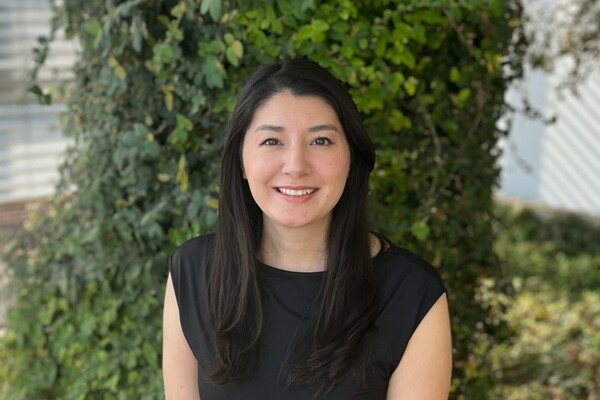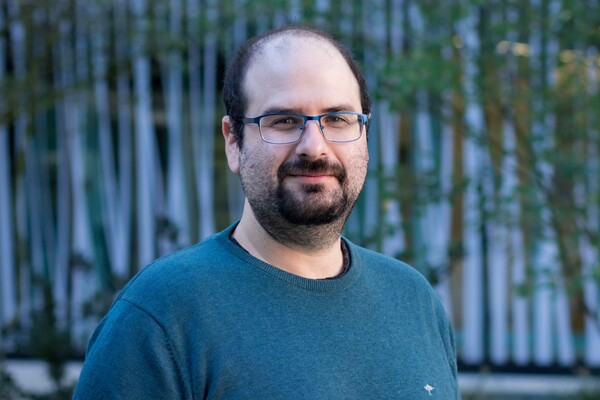Main Second Level Navigation
Dorrington Award Recognizes Graduate Research in Bioengineering, Genome Mapping and Transplantation
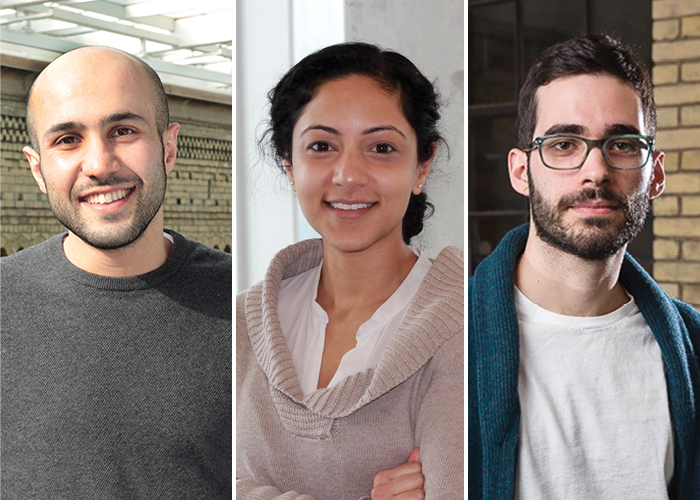
During exercise, most people don’t ponder about chemical processes playing out in their muscles, yet that’s all Mohsen Afshar can think about. A tissue engineer and tennis enthusiast, Afshar grows mini muscles in the dish that allow him to study how muscles form and work at a level of detail previously impossible.
Along with Eesha Sharma and Alexander Vlahos, Afshar is this year’s recipient of the Jennifer Dorrington Doctoral Research Award, awarded annually to outstanding graduate students in the Faculty of Medicine doing research in the Donnelly Centre. The award was established in 2006 as a tribute to Dr. Jennifer Dorrington, who was a professor in the Banting and Best Department of Medical Research. Dorrington’s pioneering research greatly advanced our understanding of reproductive biology and ovarian cancer.
“The award was highly competitive this year as we had 50 per cent more applicants than usual," says Professor Gary Bader, Chair of the award committee that included Professors Liliana Attisano, Henry Krause and Cindi Morshead as members. All are Principal Investigators in the Donnelly Centre. "These excellent students are highly deserving of the Jennifer Dorrington Award for having made important contributions to their respective fields of research, and I have no doubt that ahead of them lies a bright future as independent investigators."
"These excellent students are highly deserving of the Jennifer Dorrington Award for having made important contributions to their respective fields of research" - Professor Gary Bader
The muscles Afshar grows are tiny, no larger than a pencil tip, but they twitch just like real muscles do.
“Using the right biomaterials and extracellular matrix proteins, we can now grow human skeletal muscle in a dish in a way that mimics muscles in the body and how they respond to stimuli,” says Afshar, a fifth year PhD candidate in the group of Penney Gilbert, Assistant Professor in the Institute of Biomaterials and Bioengineering (IBBME) and Principal Investigator in the Donnelly Centre. The new tissue platform allows the team to study in exquisite detail how muscles that help us move form and work.
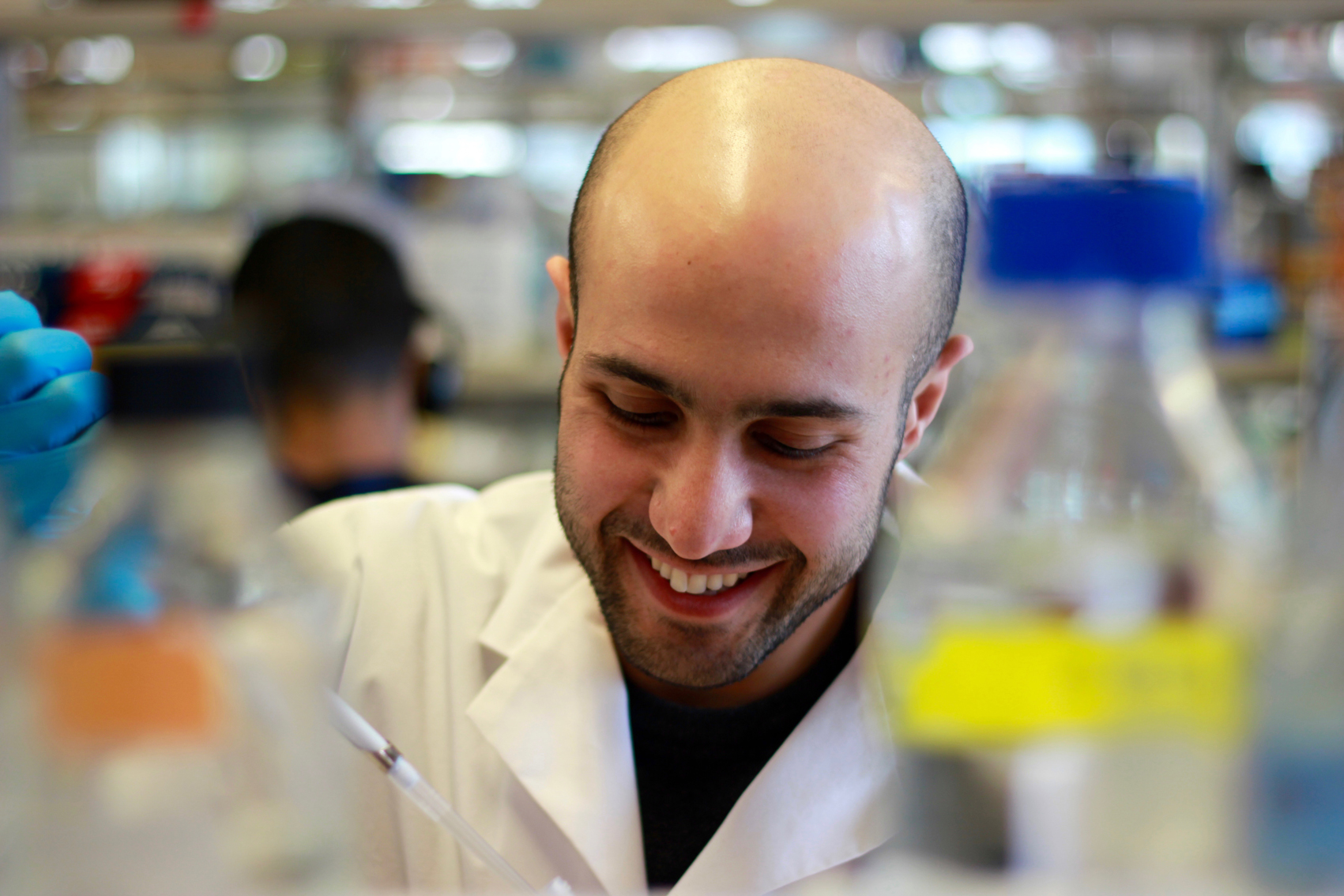
It took Afshar a lot of work to get to this point. He gets scraps of adult muscle tissue from biopsies taken during surgery by Gilbert’s clinical collaborators at the nearby St. Michael’s Hospital. To watch muscle fibers form from scratch, Afshar first had to isolate muscle stem cells from the donated tissue and then, using molecular tricks, coax these cells to grow into elongated muscle cells that eventually come together to form contractile fibers. The whole process takes about a fortnight.
“It’s all very well to have a tissue model, but it’s what you do with it that counts," says Afshar. "That’s what’s great about Penney’s lab. She always pushes us to think about how we can use our model to learn more about the science.”
"We can now grow human skeletal muscle in a dish in a way that mimics muscles in the body and how they respond to stimuli " - Mohsen Afshar, PhD candidate
One research avenue Afshar is pursuing is to figure out how nerves interlace with muscles to form the neuromuscular junction (NMJ) through which electrical impulses flow and tell the muscle to contract. Thanks to his mini muscles, he can now study this process for the first time in a three-dimensional space, similar to how it occurs in the body.
To do this, Ashfar grows muscle fibers alongside stem cell-derived nerve cells, which then self-organize into the NMJ within a custom-made 3D scaffold.
Another advantage of Ashfar’s complex tissue platform is that it is more similar to the adult NMJ than any other available models, which more closely resemble the immature NMJ in the embryo. This means that the team can now use the platform to study in a dish neuromuscular diseases such as myasthenia gravis or amyotrophic lateral sclerosis (ALS), which cause, respectively, weakness of skeletal muscles and the death of neurons controlling them, as they appear in real life.
Afshar says his research would not have been possible without support from colleagues in the lab and across the Donnelly Centre. “Ever since I started here, people have been so welcoming and collaborative,” he says. “I got a lot of help from Peter Zandstra’s lab when I first started setting up the tissue culture platform. And Jason Moffat's lab helped me overcome hurdles when working with viruses used to deliver genes to cultured muscle cells.”
Five floors up from Afshar’s bench, Eesha Sharma is investigating the uncharted territory of the cell. A self-professed physics nerd, she became fascinated with biology during high school after learning about a study in which scientists took a fluorescent protein from jellyfish and put it into a cat so it could glow in the dark. “This was mind-blowing to me,” she said. “This Nobel-winning biomedical tool revolutionized our ability to view the inner workings of the cellular machinery. I thought, if this is what we can do with biology, then that’s what I want to be doing.”
Today, Sharma is illuminating the cell not with a fluorescent protein, but with sequencing technology. Now in her final year of graduate studies in the Department of Molecular Genetics (MoGen) and working with Professor Benjamin Blencowe, Sharma has pioneered a new method that allows researchers to investigate parts of the cell that were previously out of reach.
One of the biggest surprises from the sequencing of the human genome was that of six billion DNA letters that make up our genome, only about two per cent encodes for proteins, molecules that do most of the work in the cell. Historically, this is what most research focused on. One of the biggest unchartered territories in biology is this other 98 per cent of sequence information. It is now clear that a lot of this non-protein coding DNA is copied into RNA molecules—same as the coding fragments. But instead of serving as templates for making proteins, non-coding RNAs (ncRNA) can be important in their own right in development and disease.
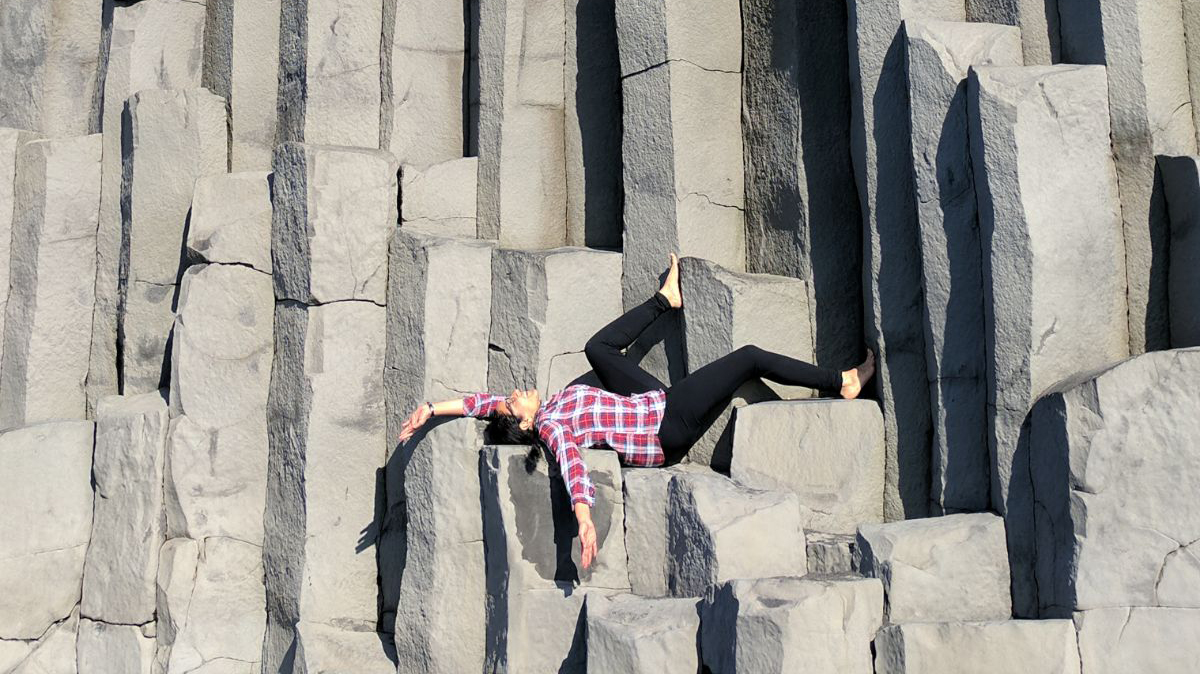
With the pressing need to come up with a way to study ncRNAs on a large scale, Sharma developed a method called LIGR-Seq. The technology captures the pairing between ncRNA and other RNA molecules, which in turn sheds light on their possible function in the cell.
“Before, there were only ways to do this one RNA at a time, using methods developed in the 1960s,” says Sharma. “These are beautiful techniques but very laborious. So, we tweaked it, harnessed some clever molecular tools and combined it with the powerful high-throughput sequencing technology we have today so that we could look systematically at thousands of interactions in a single experiment”, says Sharma.
Sharma’s technology is based on the fact that RNA molecules can stick together like Velcro, so long as their sequences are sufficiently matched to support the pairing. By surveying thousands of interactions between different RNA molecules, Sharma was able to uncover new roles for ncRNA. Her work was published in 2016 in Molecular Cell, a prestigious journal in the field and continues to be highly cited by the research community.
Learn more about Sharma’s research on non-coding RNAs
She is now working to detect and uncover the meaning of the so-called secondary structures in RNA molecules, which occur when an RNA loops in on itself. Sharma recently uncovered a new role for a ring-like structure or circular RNA in acting like an “off” switch for a gene that has been linked to a rare blood disorder. “Circular RNAs are a new concept and we’ve been able to use our data to define an interesting point of control for this mRNA, which has been linked to a blood disease called Diamond Black-fan anemia. It’s pretty fascinating what we are able to find given a fresh perspective on the cell,” she said.
Sharma credits her PhD supervisor for her success. “Ben has been an excellent mentor,” she says. “You never feel like you work for him, you work with him and that’s a very empowering thing. He is really good at drawing the strengths of his people and I don’t think I would have been able to accomplish as much as I had if I had been in another lab,” she said.
The Dorrington Award will be helping Sharma to attend a workshop in Israel on the role of ncRNAs in embryo development at which she has been selected to give a talk on her findings. “I’m really looking forward to getting feedback from the community on the latest stories I’ve been working on and finding out what cutting-edge techniques in the field are being developed. With the gene-editing CRISPR system and its variations it’s a really exciting time to be in the field.”
While Afshar and Sharma are focusing on uncovering new biology, Alexander Vlahos’ goal is to develop better transplantation methods for the treatment of diabetes. The decision to take on the project was partly personal, he said.
“My father has type 2 diabetes and my grandfather died of pancreatic cancer so maybe there is subconsciously some gravitation towards looking at the pancreas,” says Vlahos.
But he was also in the right place at the right time— five years ago, he joined University Professor Michael Sefton’s lab as a PhD candidate at IBBME. The team already had a long expertise in using bioengineering approaches to boost blood vessel growth in the body. This would turn out to be critical for Vlahos’ success in showing that type 1 diabetes (T1D), in which the body is unable to produce insulin, can be treated— in mice at least— by transplanting the insulin-producing cells, sourced from the pancreas of a healthy donor, right beneath the skin. The findings were published last year in the Proceedings of the National Academy of Sciences (PNAS).
Learn more about Vlahos’ research on transplanting pancreatic cells under the skin
If the procedure could be applied to people, it would be far less invasive than the current gold standard method in which pancreatic cells are transplanted into the patient’s liver.
“Our approach also has the advantage of being retrievable— in case something were to go wrong, the cells could be easily removed,” says Vlahos.
Vlahos is now working to improve the underneath-the-skin transplantation method so that it requires fewer pancreatic cells, which are hard to come by.
For the graft to take, the transplant site needs to be rich in blood vessels so they can support the survival of pancreatic cells. The space underneath the skin is poorly vascularized, however, and this presented a main obstacle to transplantation. Vlahos was able to clear this hurdle by co-implanting with pancreatic cells, collagen rods and cells that line the blood vessels which spurred the growth of capillaries around the graft, boosting its survival.
"Our approach also has the advantage of being retrievable— in case something were to go wrong, the cells could be easily removed " - Alexander Vlahos, PhD candidate
He is now exploring a related approach in which he vascularizes the transplant site before implanting the pancreatic cells. His other project involves developing a new technology for engineering insulin-producing microtissues. Both of these approaches focus on reducing the number of donated pancreatic cells required to have a therapeutic effect, thereby increasing the efficacy of these rare cells.
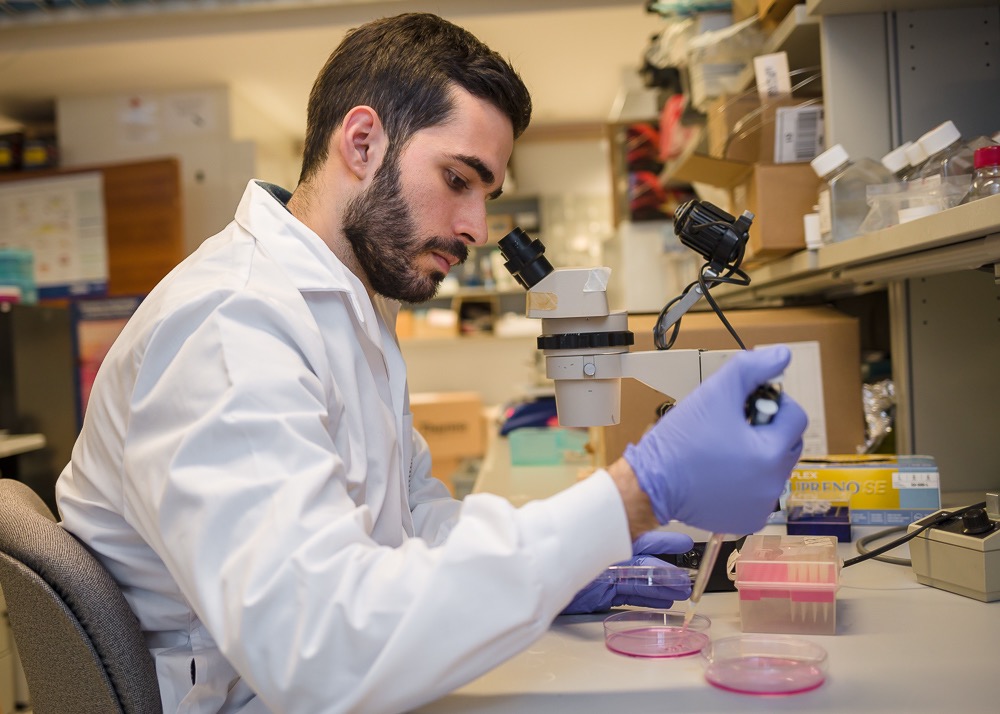
Vlahos’ success has taken the lab on a new path. When he started his PhD, Vlahos was the only person on the team working on the project. Thanks to his data, the lab has secured a $1.1M in funding from the JDRF, a leading world organization focusing on T1D research, and there are now five students working on transplanting pancreatic islets underneath the skin.
After his PhD, Vlahos wants to get postdoctoral training in order to become an independent investigator. He believes the Dorrington Award will help him reach this goal. “Looking at the past students who had won this award, they are doing very successful things,” says Vlahos. “I am humbled to be considered part of that group.”
Follow us on Twitter to keep up with Donnelly Centre news.
News
